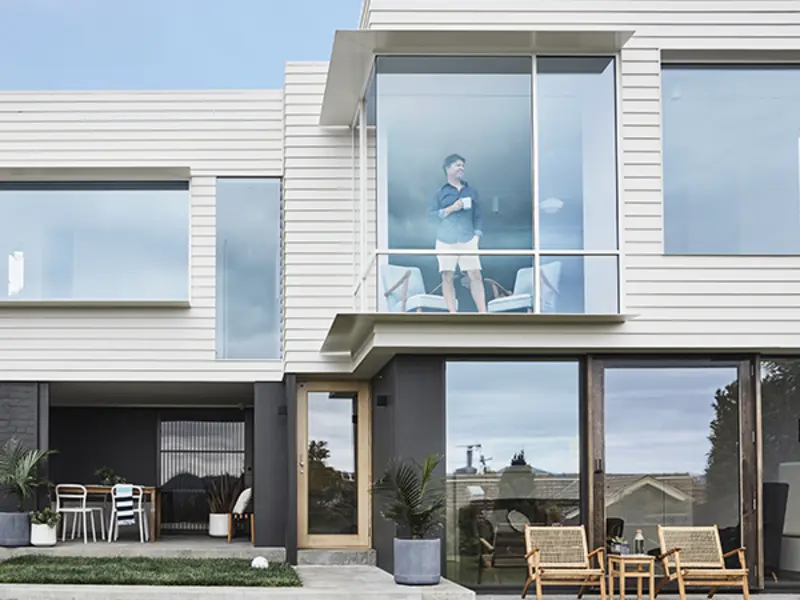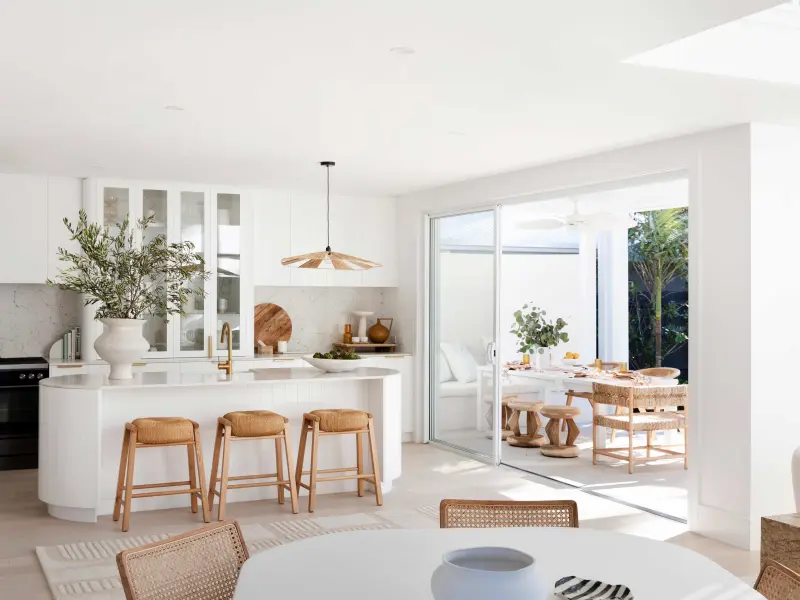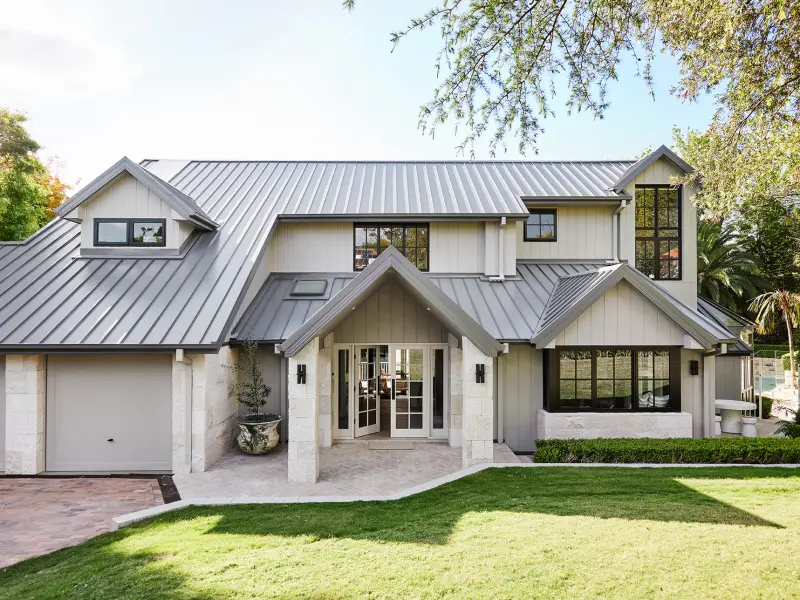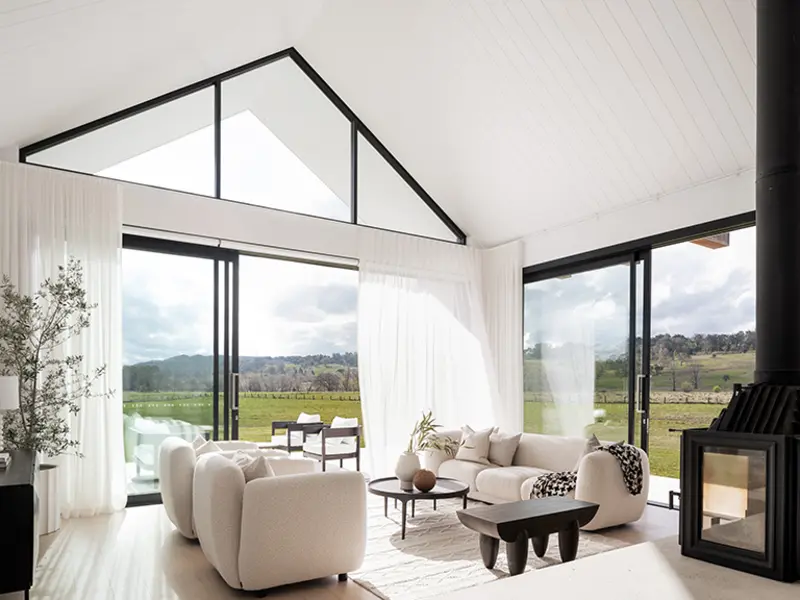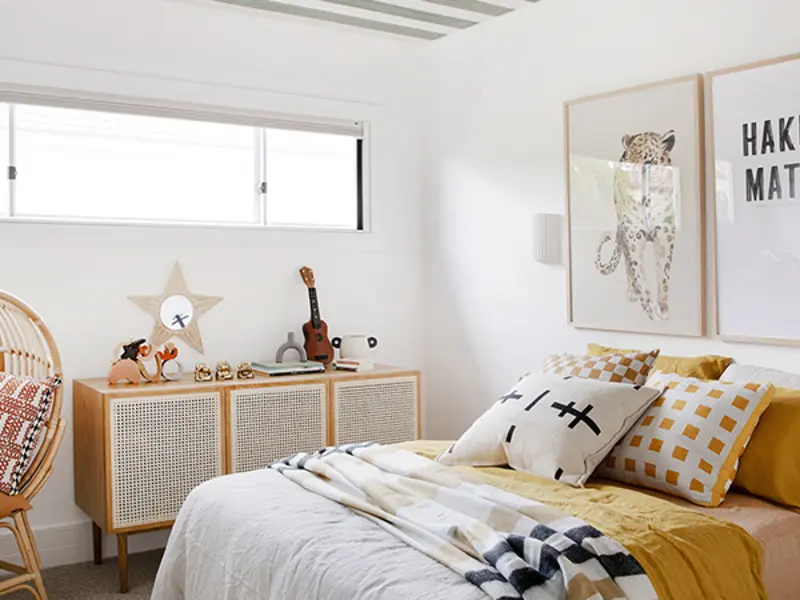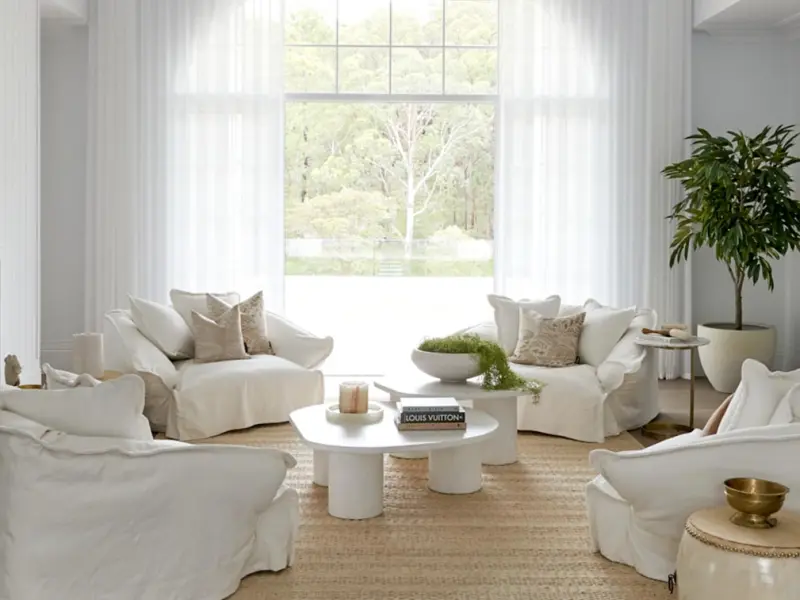
Must-have finishing touches for duplex designs
Landscaping and hardscaping are the all-important finishing touches to your build, helping to articulate duplex designs, as well as enhancing exterior cladding schemes.
“The façade of a duplex is so important. You can get it so right, but you can just as easily get it quite wrong,” says interior designer Kate Lawrence. “Landscaping plays a massive part in that, and thinking about how to tie the architecture into the landscaping so it all has a story. And then, choosing the right materials and colours.”
How you approach these elements will depend on your reason for building. Will one side of the duplex be your forever home, or are you building to rent or sell? Maybe both! Either way, keep ease of maintenance and futureproofing in mind for best results. In this article, we’ll explore:
Landscaping considerations and our favourite low-maintenance plantings
The importance of good lighting
Hardscaping details to consider, including paths, driveways, fences and letterboxes.
What to consider when landscaping a duplex
Landscaping is an important element of your build, enhancing the façade and contributing to street appeal.

“Landscaping is a must-have for a duplex,” advises Neil Hipwell of award-winning builders Futureflip. “It can really soften a strong, boxy shape.”
Work landscaping into your budget from the beginning, as well as a planting plan that you can execute – even if, at the end of the build, the only course of action is DIY!

There are two distinct approaches you can take with your planting. The first is to create a mirror image on each side of the duplex. This simplifies the execution process and creates a sense of symmetry and harmony between the two homes.

Alternatively, the creation of two unique landscape plans offers its own advantages. While more choices need to be made, this allows for some individuality and personalisation for each home, which is great if you intend to live in one and rent or sell the other.
A realistic planting plan, including turf, plantings at multiple heights and a feature tree, will help you budget. As demonstrated in these stunning duplex examples, your goal is to enhance that beautifully executed façade with its elegant exterior cladding.
Five easy-to-maintain plants for Australian landscaping
Low lying: Dwarf Agapanthus (Agapanthus praecox 'Peter Pan') A fantastic and high-impact filler plant, this strappy, compact Agapanthus variety produces beautiful blue or white flowers and is drought-tolerant.
Grass: Lomandra (Lomandra spp.) This versatile plant thrives in a variety of climates and soil types, and is fabulous for adding texture and structure to the landscape.
Spilling plant: Casuarina Glauca (Cousin It) With its long, trailing foliage, Cousin It is a great option to soften modern exteriors, for rockeries and to spill down embankments or retaining walls. A great option for duplexes.
Feature tree: Pandanus (Screw palm) Native to eastern Australia and Pacific Island, this hardy palm and its gnarled trunk makes a brilliant feature tree.
Hedging: Lilly Pilly (Syzygium spp.) Beloved for its fast-growing, dense foliage that provides excellent privacy, and its ability to tolerate pruning.
Lighting duplex designs with style
Street appeal isn’t just about the daylight hours – you also want your home to impress after the sun goes down, and this is where clever and creative lighting can make all the difference.

It’s essential for safety and comfort, as properly lit spaces – including pathways, entryways and parking spaces – reduce the risk of trips and falls, and provide a deterrent to intruders, as well as making your space useable day or night. If you are planning to rent one of your duplex homes, security lighting will add to the appeal for prospective tenants.
When it comes to lighting for appearance’s sake, there are so many options. Think about a subtly highlighted pathway to the front door, or uplighters beneath a gorgeous feature tree. When approaching the design and installation of lighting in a duplex home, consider the following:
Layered lighting:
This means lighting at different levels and intensities, for different purposes. Create depth with a combination of ambient lighting (general illumination), task lighting (focussed lighting for specific activities) and accent lighting (highlighting architectural features or the surface of textured cladding products such as Hardie™ Brushed Concrete Cladding or Hardie™ Fine Texture Cladding).
Energy efficiency:
Opt for energy-efficient lighting solutions, such as LED bulbs and fixtures, to reduce energy consumption and lower utility costs. Consider incorporating lighting controls such as dimmers and timers that can be activated from your smartphone.
Motion sensors:
Install motion sensor lights for convenience, security and energy efficiency.
Not sure where to begin? Engage a professional lighting designer for expert advice on lighting design, fixtures, placement and installation to ensure a well-balanced scheme.
Make Modern with Hardie™ Architectural Collection
Discover the endless design possibilities of our new curated cladding collection. Everything you need to know, available in our NEW interactive magazine, from dream home inspiration to real-life case studies, top tips from industry experts and distinctive cladding combinations.
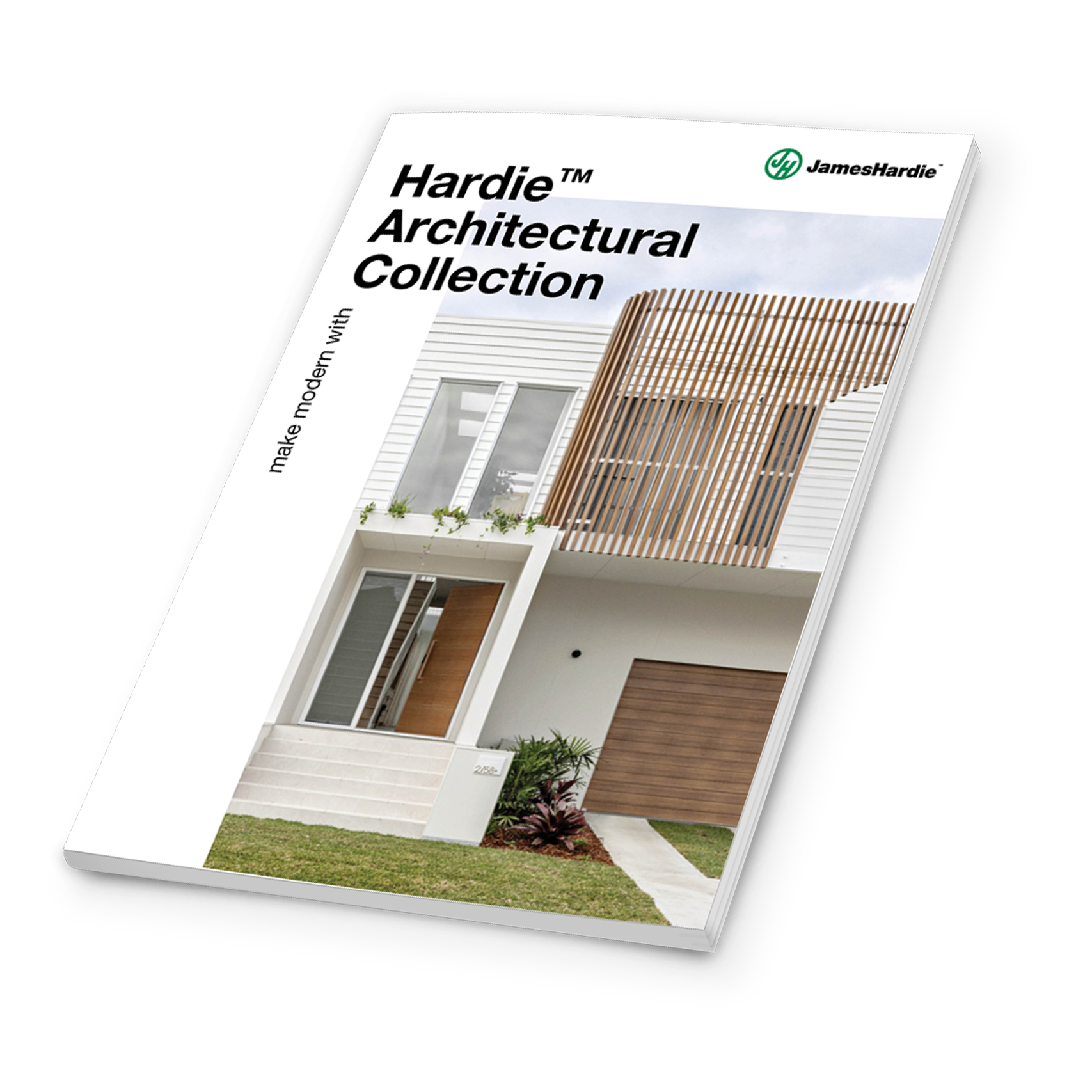
Hardscaping highlights
Hardscaping offers an opportunity to really connect your outdoor space to your home’s façade – for example, by choosing finishes that highlight the textures and profiles of cladding products from the Hardie™ Architectural Collection.
Pathways, outdoor seating areas and water features elevate the visual appeal and functionality of exteriors. Choose materials that complement the exterior cladding and highlight architectural detail.

For example, if you’ve used Hardie™ Brushed Concrete Cladding for your ground floor, the same product could be used on custom-built planter boxes. If you’ve opted for the render look of Hardie™ Fine Texture Cladding, rendered gateposts or planters painted the same colour as your façade will create a cohesive look.
When it comes to fencing, consider privacy, security and aesthetics. A well-designed and low-maintenance fence, along with an automatic gate, is likely to appeal to potential buyers or renters.

Aluminium batten fencing is becoming increasingly popular, and is easier to maintain than timber and aesthetically a great fit for a modern façade. Consider a charcoal-coloured batten fence with black-painted cladding, as seen on this Melbourne duplex featuring Axon™ Cladding.
Finally, letterboxes can be a fun design statement, or as simple as a basic box, but they must be practical, too – after all, this is how people will identify your home from the neighbouring duplex! Always opt for a letterbox that allows plenty of space to affix house numbers that can be seen clearly from the road. This stunning duplex by Orton Haus features a stunning letterbox clad in Hardie™ Brushed Concrete Cladding to match the home’s modern coastal exterior.

For loads more real-life duplex inspiration, read Love the look: 4 stunning duplex designs

